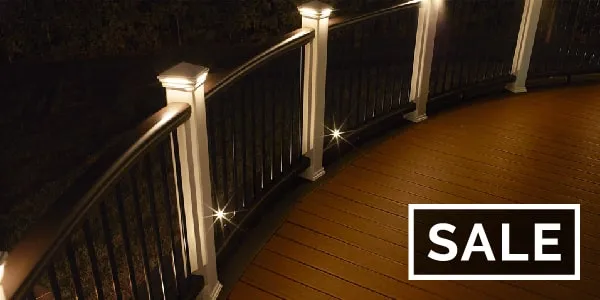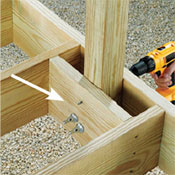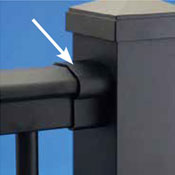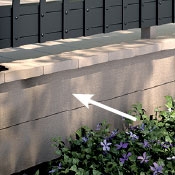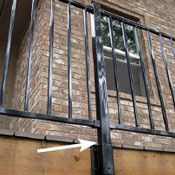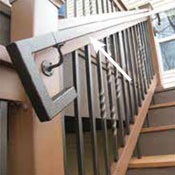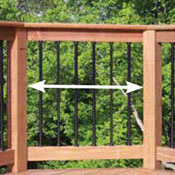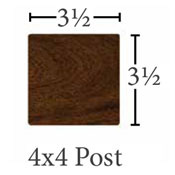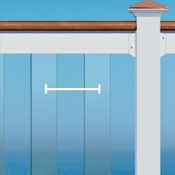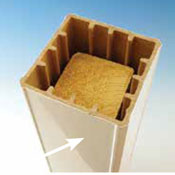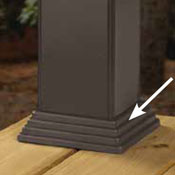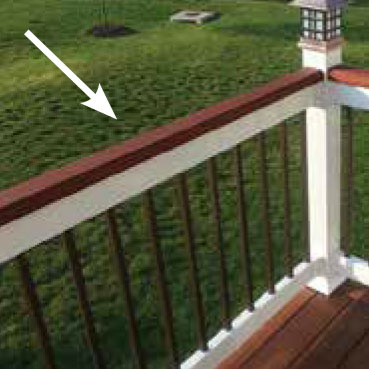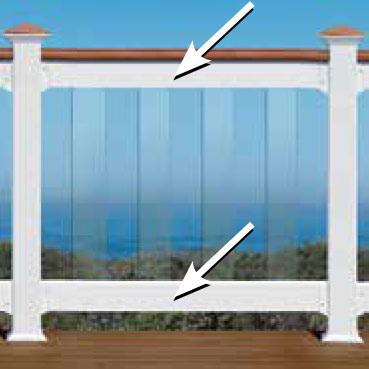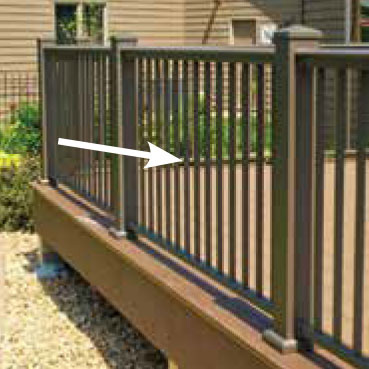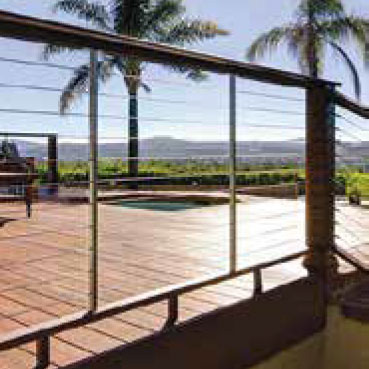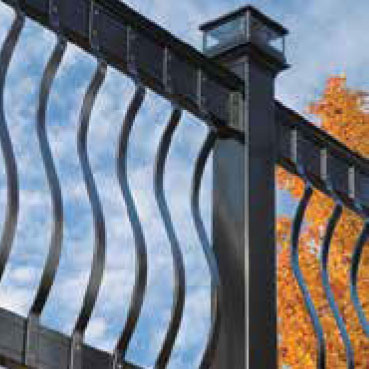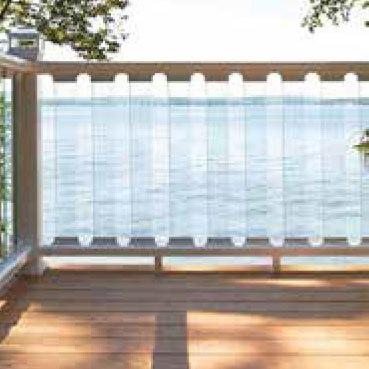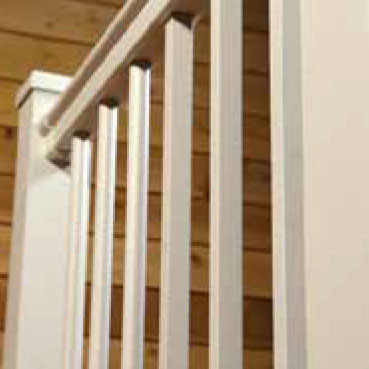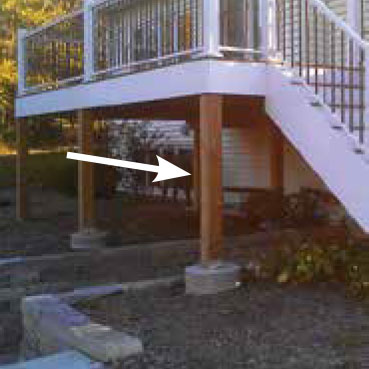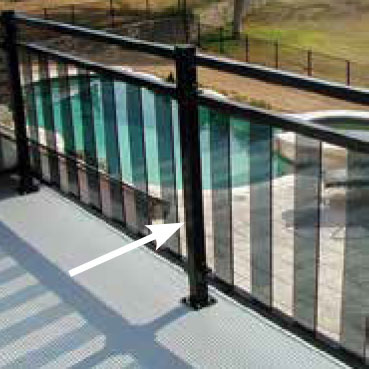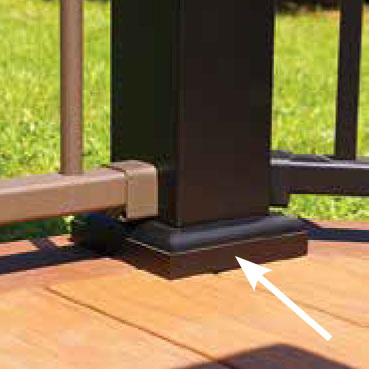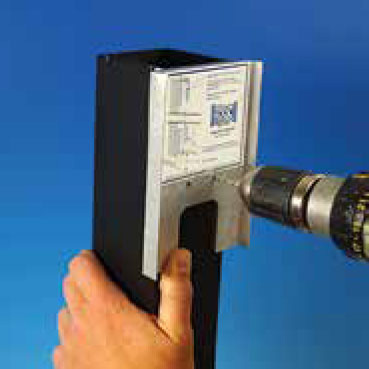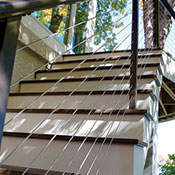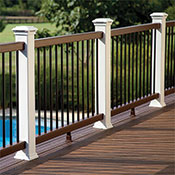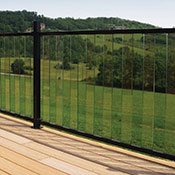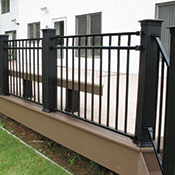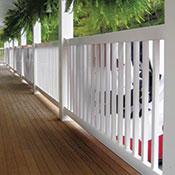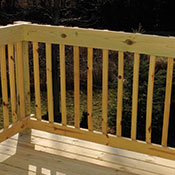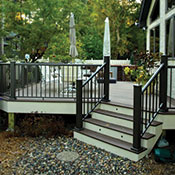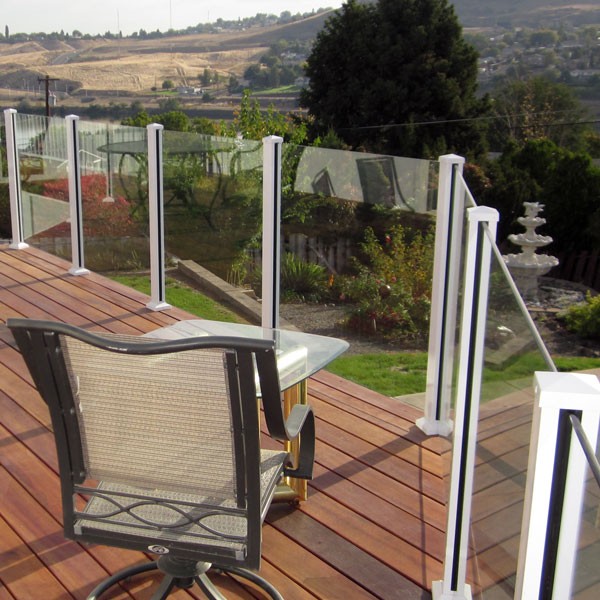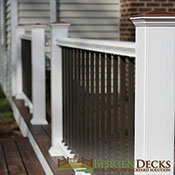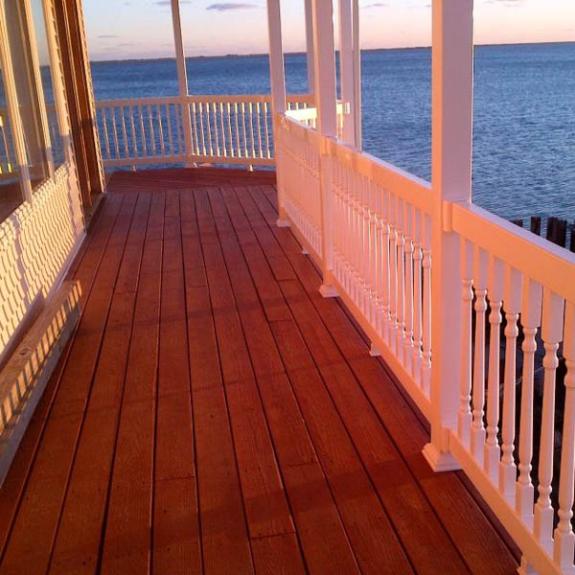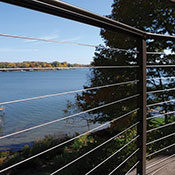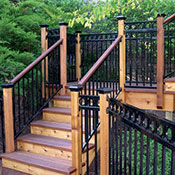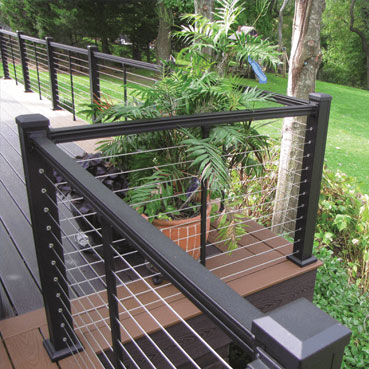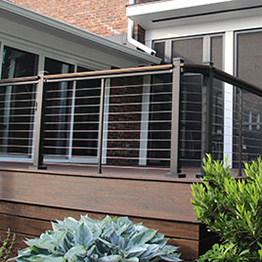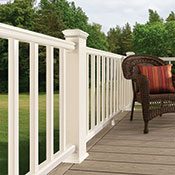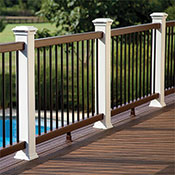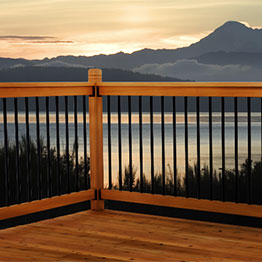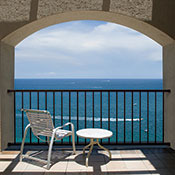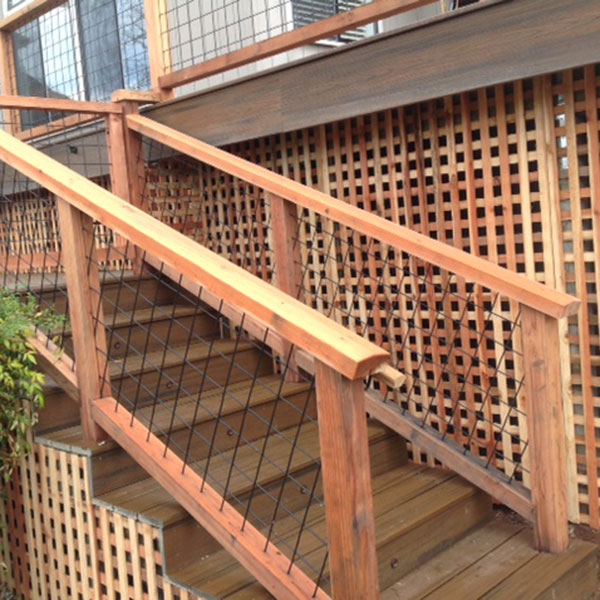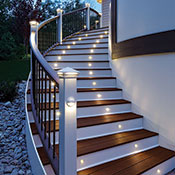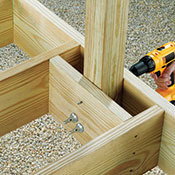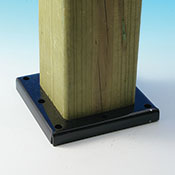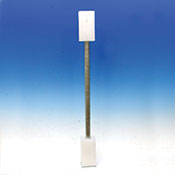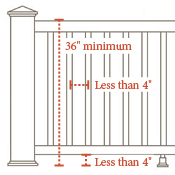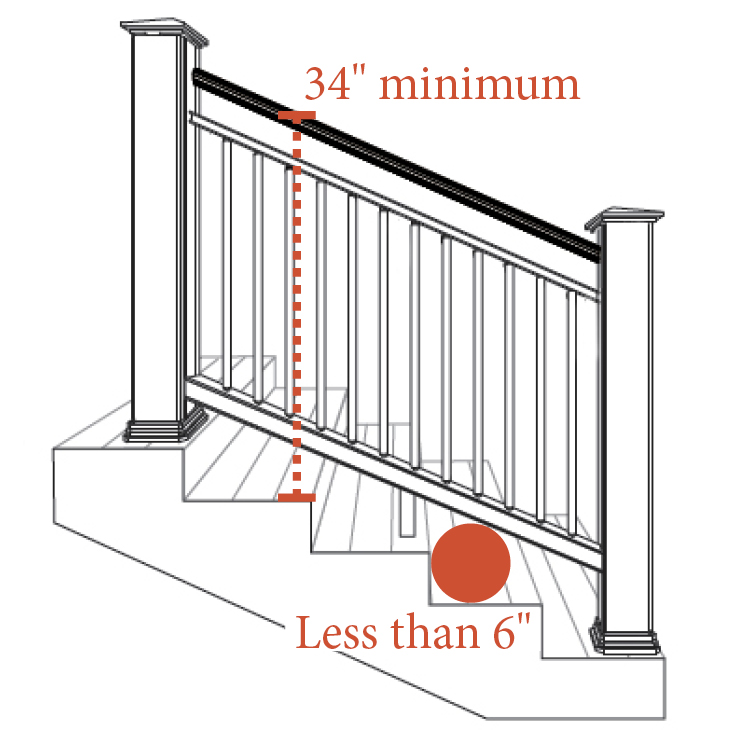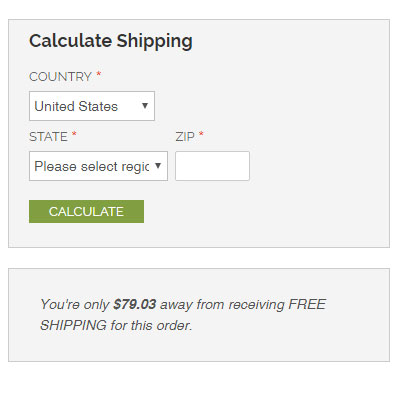Know Your Code!
The first consideration in choosing deck railing is always safety. Before starting any deck project, contact your
local building department for any and all applicable code requirements. These vary from state to state and even
among municipalities, but typically are as follows:
- Baluster spacing -The opening between balusters should be less than four inches.
- Railing height - Required railing height can also vary from city to city. The most common minimum height
requirements are 36 or 42 inches from the deck surface to the top of the railing. Contact your local building
department for specifications regarding your project. Many municipalities updated their requirements in 2009 and
2010.
Budget
In order to accommodate many budgets, DecksDirect.com offers a wide variety of rail systems. If you have an idea
what you'd like to spend per lineal foot of rail, either refer to our railing manufacturers page in this guide or
contact one of our railing experts to discuss which material or manufacturer is best for your needs.
Time Frame
DecksDirect is the largest stocking dealer of deck railing. However, when offering a large variety of options,
not all railing systems can be stocked at our warehouse. If your project deadline is fast approaching, it is best
to choose from items that are in stock and can be shipped quickly to avoid disappointment. Look for shipping
details like “Quick Ship” and “Special Order” on the specific product pages.
House's style/architecture
In our opinion, the railing is THE most important choice you will make when planning your deck. It will be
noticed from near and far, for better or worse. The size, color and style of railing can have a dramatic impact on
the look and feel of your deck, and can help it to blend with the rest of your home and yard. For the most
aesthetic appeal, the railing should complement the other details of your home by being in proportion to them.
Experience level
The seasoned handyman will be able to tackle any system without difficulty and will not shy away from a system
which requires assembly of individual top and bottom rail components, balusters, and connectors. On the other
hand, a homeowner new to this type of project might have more success installing prefabricated panels or using a
system that has predetermined baluster sizes, angles and locations with pre-installed baluster connectors.
Location (coastal or inland)
Exposure to saltwater and salty air can damage a number of rail systems. If you are within a mile of the coast,
contact us to find out which systems are approved for the conditions in your area.
Exposure to sun/elements
Environmental factors can play a role in your railing’s appearance and function. Choosing a black metal rail is
not recommended for a deck that will be in full sun in a hot climate. A glass railing within reach of lawn
sprinklers might look perpetually spotty, and glass balusters can magnify the sun’s intensity (increasing the
temperature on the deck surface) while cutting down on airflow.
Color preference
Not all rail styles are available in all colors, so keep that in mind if color is your most important feature.
For example, if white is the desired color, it is good to start with styles offered in white. Some systems have
components that can be mixed and matched to achieve a custom look, and you may consider choosing a color or
multiple colors to match or contrast with features on or around the home. Also keep in mind that the darker the
color of the railing, the clearer the view through the railing will be.
All about the view - or lack of it.
Railing not only controls your view from the deck, it also determines what your neighbors can see. Wide balusters
and railing provide more privacy for a deck with a hot tub, whereas glass panels and cable railing invite views
from all perspectives. As stated in the color section, choosing darker infill allows for easier viewing through a
rail section to the scenery beyond the deck.
Ideal post mounting application for the project
To maximize the available space on the deck surface, fascia mounting is a great option. Not all systems offer
this type of post, so the traditional method of mounting to a horizontal surface might be required.
Additional blocking or structure
To ensure a stable connection between each post and frame, a solid block is needed. If the framing does not
already have enough structure, added blocking is necessary to enhance stability.
Maintenance Matters
How much time do you really want to spend maintaining the look of your deck and its railing? Traditional wood
rails are quite time- and labor-intensive to maintain, so choosing a different material can free up lots of time
to enjoy the deck! Glass panels or balusters may require treatment to minimize spotting, but materials like metal
and composite are virtually maintenance free.
Available Accessories
Are you planning a railing with a simple, straightforward layout? Or is complex and embellished what you need?
Each system has its own bracketry to accommodate angles and stairs, and some offer add-on enhancements such as cap
rails for creating a unique look for your specific project.


